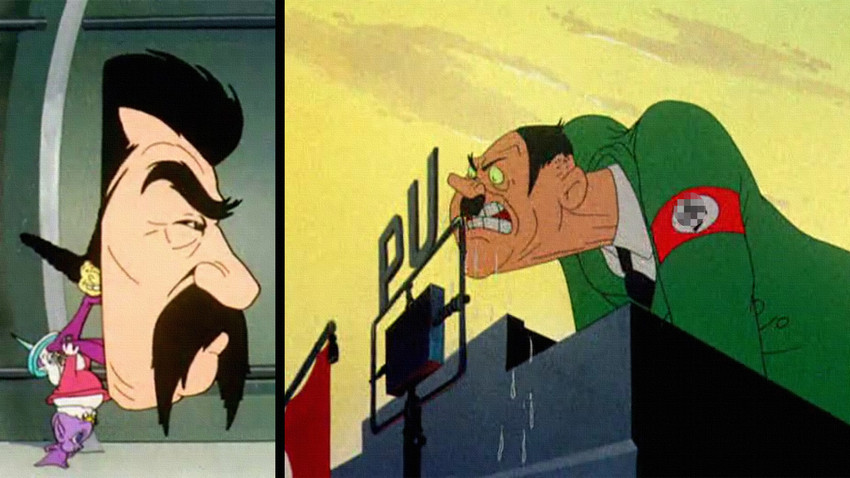Watch Warner Bros.’ hilarious cartoon about Soviet gremlins (VIDEO)

It’s WWII and Hitler boards a bomber to personally destroy Moscow. On the way to the USSR, he encounters “gremlins from the Kremlin” who wrack his airplane and ruin his wicked plan.
This is not Hitler’s worst nightmare, but a plot of a cartoon produced in May 1944 by Warner Bros. and a team of American animators who would create the famous Looney Tunes a few years later.
The storyline of the Russian Rhapsody is indicative of the American public view of WWII in 1944: Hitler is depicted as a historical warmonger who’s bound to lose eventually.
In the cartoon, frustrated by the failures of the Nazi Wehrmacht, Hitler declares he will personally fly a bomber to destroy Moscow, the capital of the USSR. On the way to Moscow, gremlins — folkloric mischievous creatures that are believed to cause malfunctions in aircraft and other machinery — start dismantling the Nazi warplane without Hitler being aware.
The troublesome creatures go berserk with the plane’s equipment, destroying it while singing “We are gremlins from the Kremlin” to the tunes of classic Russian melodies like ‘Dark Eyes’ and ‘Song of the Volga Boatmen’.
Along sing other gremlins:
We’re gremlins from the Kremlin
Da da da da da
We’re gremlins from the Kremlin
Da da da da da
I’m a gremlin from the Kremlin
Oh
We are Russian gremlins
Up in the sky we're found
Schicklgruber’s aeroplanes
We smash right to the ground
We like nothing better than to mess up Messerschmitts
And send their heavy bombers down to earth in teeny bits
Napoleon and his army never got to first base
Now we’ll push those nasty Nazis in der fuehrer's face
We’re here, we’re there, we’re everywhere
We’re in the Nazi’s hair
And when they try to catch us
We’re the little men... who weren’t there
We’re the little men who weren’t there.
After the five-minute-long abuse of the unsuspecting Hitler, the gremlins reveal their presence and drive the Nazi leader off the bomber and into a free fall. Hitler lands on the ground and tries to shelter from the falling bomber, but ends up hitting Hitler, burying the Nazi alive, while forming a headstone with the plane’s tail.
The seven-minute-long cartoon ends with a final shot of a gremlin pounding Hitler back into the ground with a sledgehammer.
In a way, ‘Russian Rhapsody’ might well have been a personal message from Warner Bros. to Nazi Germany and Hitler, as the gremlins’ visual looks were, in fact, based on the employees of the Warner Bros. animation department staff.
Without further ado, enjoy!
Click here for 10 classic Russian animated movies you need to watch.
If using any of Russia Beyond's content, partly or in full, always provide an active hyperlink to the original material.
Subscribe
to our newsletter!
Get the week's best stories straight to your inbox